1 Introduction
The main actions of the Executive Committee during the 2015–2018 period can be summarized under the following categories:
-
Improve the efficiency and transparency of the IAU Administration
-
Promote the junior astronomers and improve the gender balance of the individual members
-
Maintain a strong link between the Executive Committee and the IAU Divisions
-
Continue and improve the support to Symposia and Regional Meetings
-
Prepare the Strategic Plan for the decade 2020–2030
-
Offer a “neutral” forum for discussing future large facilities (with the support of the Kavli Foundation)
-
Sustain and expand the activities of the IAU Offices: OAD, OAO, OYA.
-
Prepare and start the celebrations for the 100 years anniversary of the IAU
The specific activities in the different categories are described in the following sections.
2 Specific activities
2.1 Improvements in the efficiency and transparency of the IAU Administration
Several actions were undertaken within the IAU Office, with the support of the IAU Officers, aimed at improving the efficiency of the routine tasks of the Administration. A number of tasks were streamlined and performed using modern software tools, specifically adapted to the needs of the Office. As a natural outcome of these efforts, the IAU accounting became more transparent and easily understandable.
2.1.1 National Members Database
One of the most important task of the IAU Administration is the monitoring of the payment of the annual due by the National Members (NM). In order to properly handle the matter, the Head of Administration has to take into account the NM category, the amount of the unit due for the year and any pending arrears. Individual letters inviting the payment of the annual due (including arrears) has to be mailed to all the NM at the beginning of the year and later as a reminder if necessary. Until 2015 this chore was done by hand, taking a considerable amount of time and with the danger of miscalculation of the dues. Moreover, keeping track of the historical data was cumbersome and impractical.
As of 2015, a software application, based on the Claris@FileMaker relational database management system, was developed with aim of automating most of the NM dues’ tasks. The application computes automatically the dues amount for each NM for each year of the triennium and keep track of the payments and possible arrears. It also generates the individual NM letters asking the annual payment, automatically computing the requested amount. One month of work is reduced to a couple of days and the risk of material mistakes is almost reduced to zero.
2.1.2 Simplification in the IAU accounting system
Until 2015 the financial accounting of the IAU budget was performed using a French commercial system (SAGE@) which was required to produce a annual financial report according to the requirement of the French legislation for Non-Governmental Organizations (NGO) as the IAU. The format of the French report was also the one requested by the auditor (see Section 2.1.4). The SAGE version in use was however overly complicated for a simple accounting as the IAU one. Therefore, by discussing with the software provider, the IAU Administration opted for a simplified version of SAGE, known as CIEL, which has the same capability of SAGE, but it is much simpler to use and has a more modern user interface. The transition from the old system to the new one was rather smooth and the gain in efficiency considerable.
Although the Financial Report produced by the CIEL (or SAGE) system is understandable by the French auditor, its format and structure is unfamiliar to the average astronomer and therefore it needs to be “translated” in a language that is more clear to the Executive Committee, to the Finance Committee and to the NMs. Until 2015 this “translation” was manually performed by the Head of Administration with the supervision of the General Secretary. The financial data were obviously the same as in the French Report, but the summary tables, manually compiled as Excel worksheet, were more transparent.
This manual translation was however prone to material errors which in fact, on occasions, took a lot of time to be traced and corrected. In order to avoid this possibilities and to automate the “translation” process, a simplified accounting system was developed using the Claris@FileMaker. The system imports the same transactions that are recorded in CIEL, but presents the data in a more understandable way. In particular, it groups the transactions in five categories: 1. Science, 2. Education and Outreach, 3. Executive Committee and Publications, 4. Administration and Operations and 5. Income. The system is accessible remotely by the General Secretary (while CIEL can only be consulted locally) and can generate automatically the tables that are used in the Finance Report presented to the Executive Committee and to the Financial Committee. It has the additional advantage (not available in CIEL) to include the forecast expenditure for the main accounting entries. In this way the Administration knows at any time during the year the level of expenditure.
2.1.3 Improved transparency of the financial administration
For a number of reasons, the annual auditing of the IAU accounting, as foreseen in the Rules and Regulations, was suspended during the triennium 2012–15. This fact was openly criticized by some NM representatives during the Business Session of the XXIX GA in Honolulu. Therefore, the auditing was immediately reinstituted and the auditing reports communicated to the Executive Committee and to the Finance Committee as an appendix to the annual Financial Report. In order to improve transparency, the latter was regularly illustrated to the Financial Committee in video conferences, which were instrumental to answer any queries by the Finance Committee and to acknowledge any suggestions aimed at improving the comprehensibility of the Report. In particular, it was agreed to distribute the Annual Financial Report to all NM, after approval by the Finance Committee and the Executive Committee.
2.2 Promotion of junior astronomers and improvement of the gender balance of the Union
The Executive Committee, by analysing the composition of the Union in terms of age and gender distribution of its individual members, noted that the Union was notably lacking young astronomers and suffered by an unbalanced gender distribution. It was recognized that the first effect was clearly due to the admission procedure for new members that requires the candidate to hold the equivalent of a tenure track position in astronomy or astrophysics. Under this rule, post-docs and researchers in their early career cannot be admitted as members. While the admission rule was confirmed in order to be consistent with the character of the Union which admit only professional astronomers, various options were discussed in order to allow younger researchers to contribute to the activity of the Union. In addition, it was noted that, by admitting younger astronomers, the gender balance would automatically improve.
After thorough discussion, it was agreed to introduce the new category of Young Member. This would be open to researchers that have just completed their PhD who will be admitted for an initial period of three years renewable for more three years. It is expected that after six years the Young Member would be eligible to become a Member or, if he/she would have left astronomy, his/her membership will decay. The procedure for proposing and admitting Young Members was introduced in the Working Rules as follows:
III.b Junior Members: Scientists who have completed their PhD studies and have the prospect of becoming professional researchers in some branch of astronomy are eligible for selection as Junior Member of the Union. Junior Members are admitted annually by the Executive Committee on the proposal of a National Member, supported by at least two referees that should assess the potential of the candidate to become a professional astronomer. The Junior membership is temporary and cannot be extended for more than 6 years.
Although the IAU does not have the instruments to influence directly the gender balance of its membership, it was decided to regularly update a table that contains the gender composition within each National Member cohort of individual members (https://www.iau.org/administration/membership/individual/distribution/).
Additional actions aimed at fostering the active participation of young astronomers was the creation of a Working Group of Young Members, reporting directly to the EC, the institution of the IAU PhD Prize to be awarded annually to the best PhD Thesis in each of the 9 Divisions, the participation, via the Women in Astronomy WG, to ICSU funded project on Women in Science.
Finally, the IAU Code of Conduct, to be enforced in any IAU organized events, was reviewed with specific anti-harassment statements.
2.3 Maintain a strong link between the Executive Committee and the IAU Divisions
In order to promote the participation of the IAU Divisions in the activities of the Union it was confirmed that the Division Presidents should be invited in person to one of the Annual Executive Committee Meeting within the triennium and invited to participate remotely to all the EC Meetings. All relevant EC documents will be shared with the Division Presidents.
A further involvement is the administration of the annual PhD prize.
2.4 Continue and improve the support to Symposia and Regional Meetings
The competition for the IAU Symposia and Focus Meetings (at the GA) continues to be very high, a demonstration of their scientific value and prestige. A major novelty was represented by the transition from the printed only version of the Proceedings to the possibility, for the participants in the Symposia, to opt for an online version.
The contract with Cambridge University Press concerning the publication of the Proceedings and of the Transactions was renewed, with the inclusion of the publication online of all past Volumes.
2.5 Prepare the Strategic Plan for the decade 2020–2030
At the XXIX GA a Resolution was approved about the preparation of a new IAU Strategic Plan for the decade 2020–30 to be presented at the XXX GA in Vienna. The resolution suggested that existing and potential stakeholders should be consulted.
The Executive Committee #98 (Mexico, May 2016) appointed a dedicated Working Group for the preparation of the new Strategic Plan. It was decided that the new extended Strategic Plan, called the “IAU Strategic Plan 2020–2030,” should encompass, beyond the Astronomy for Development aspects, all the activities of the IAU.
Division Presidents and drafted a preliminary version of the IAU Strategic Plan 2020–2030. In October 2017 the Working Group sounded the opinion of the IAU community at large about the completeness of the Strategic Plan and collected and analysed more than 150 comments by IAU Individual Members.
In February 2018 the revised draft was distributed for comments to all the IAU National Members representatives. A final draft of the Strategic Plan 2020–2030 was approved by the Executive Committee #100 (Vienna, April 2018).
2.6 Offer a “neutral” forum for discussing future large astronomical facilities
An Executive Committee Working Group on Global Coordination of Ground and Space Astrophysics was formed with the purpose of offering an unbiased forum for discussing future large astronomical facilities.
With support of the Kavli Foundation, a Workshop on “Future Space-Based Ultraviolet-Optical-Infrared Telescopes” was organised (by invitation only) in Leiden in July 2017). The Report of the Workshop was published online.
2.7 Sustain and expand the activities of the IAU Offices: OAD, OAO, OYA
2.7.1 Office of Astronomy for Development (OAD)
– The Revised Agreement between the IAU and the South Africa NSF which was signed at the XXIX GA in Honolulu was implemented.
– The Call for OAD Projects became annual with revised funding.
– A European Regional OAD was inaugurated in Leiden.
2.7.2 Office of Astronomy Outreach (OAO)
– A revised agreement was signed between IAU and NJAO.
– The responsibility of the publication of the CAP (Communicating Astronomy to the Public) Journal and of the organization of the CAP Conferences was assigned to the OAO.
– The management of a number of activities related to the IAU 100yrs celebrations was assigned to the OAO as well as the coordination of the network of National Outreach Coordinators.
2.7.3 Office of Young Astronomers (OYA)
– The Agreement between IAU and NASL (Norwegian Academy of Science and Letters) was revised and signed.
– New Director (Itziar Aretxaga) and Deputy Director (David Fonseca Mota) of the IAU School for Young Astronomers (ISYA) were appointed.
– It was decided to organise a total of three ISYAs every two years.
2.8 Prepare and start the celebrations for the 100 years anniversary of the IAU
An organizing committee for the celebrations in 2019 of the 100 yrs anniversary of the IAU was appointed as well as a Project Coordinator (with the cost shared with the Leiden University).
An exhibition called “Above and Beyond” which illustrate the progress of the astronomical science in the past 100 years was commissioned with the aim to inaugurate it at the XXX GA in Vienna.
It was decided to host the Opening Ceremony of the 100 yrs Anniversary in Brussels, at the Academies des Sciences on April 11–12, 2019. It was also decided to organise a special event in Rome, at the Accademia dei Lincei, on May 14–17, 2029, on the occasion of the Executive Committee #104.
3 Financial Report 2015–2018 and Budget Projection 2019–2021
This section contains a summary of the financial evolution of the IAU budget and assets during the triennium 2015–18 and the draft of the financial projection of the IAU for the next triennium 2019–21. It has been presented to the Finance Committee and to the Officers on the occasion of their Annual Meeting. The current version has been updated for the EC#100 and EC#101 following the comments and suggestions of the Finance Committee and of the Officers. It was finally presented during the Business Meeting of the XXXth General Assembly.
The preparation of the triennial projection has taken into consideration the Financial Reports of the past triennium and the IAU Strategic Plan 2010–2020. It also takes into account the foreseen activities for the celebrations of the IAU 100 yrs anniversary in 2019.
3.1 Triennial Report 2015–18 and the rationale for the projection 2019–21
The full details of the budget evolution (income and expenditures) during the triennium 2015–18 can be found in the three Annual Financial Reports that have been produced for the years 2015, 2016 and 2017 that were distributed to all National Members. In this document we only comment on the global trend of the IAU assets and a few notable features.
The trend of the last two non-GA years (2016 and 2017) has been particularly positive, with a global increment of the assets of more than 450 K€ from December 2014. The positive result is due to a number of factors: a prompter payment of the dues and arrears by the NMs, a reduction of the operational expenditures (cancellation of unused insurance and maintenance contracts, new telephone contracts, rationalization of travel expenses, etc.), donations.
The current situation will allow the IAU to provide an excellent support to the participation to the XXX GA (Vienna, August 2018), exceeding the foreseen budget for travel grants, without affecting the support to the education and outreach activities (OAD and OAO). It will also allow the support to the preparation for the 100 yrs anniversary celebration in 2019.
The increase of the travel grants for the XXX and future GAs is justified by the following reasons:
-
1. The special Symposium IAU S349 “Under one sky: the IAU centenary symposium” has several invited speakers that are by now retired and have little or no access to institutional funds to participate in the Symposium. Their presence is however essential for its success, therefore they should have access at least to partial travel support.
-
2. It was noted that, while the SOC of the non-GA Symposia may use the registration fee as well as local sponsors’ funds to support invited speakers, this is not true for Symposia and Focus Meetings at the GA. At the last Officers Meeting it was therefore decided to waive the registration fee of up to 4 Symposia invited speakers to and up to 2 Focus Meetings ones.
-
3. In 2017 the EC decided to institute the IAU PhD Prize that rewards yearly the best PhD Thesis in each of the fields covered by the 9 IAU Divisions. The prize consists in the invitation to participate in the next GA, covering the registration fee, travel and 1 week subsistence.
The other notable items that have been considered in the preparation of the 2019–21 projection are the activities for the Celebration of the IAU 100 yrs and the introduction of the Office of Astronomy Education (OAE) which is being proposed as part of the new IAU 2020–2030 Strategic Plan.
An additional item, proposed during the Officers Meeting 2018 and now included under Scientific Activity, is the support of an annual meeting of the Junior Members.
The general rationale that has been followed in preparing the projection was to contain the operational expenditures (EC and Administration) to the current level and to invest the accumulated profit in Scientific, Educational and Outreach activities with the objective to reach, at the end of the triennium in 2021, an asset equal to about 1 year income.[-20pt]Please provide relevant in-text citation for figure 1–7 and 9, if any.
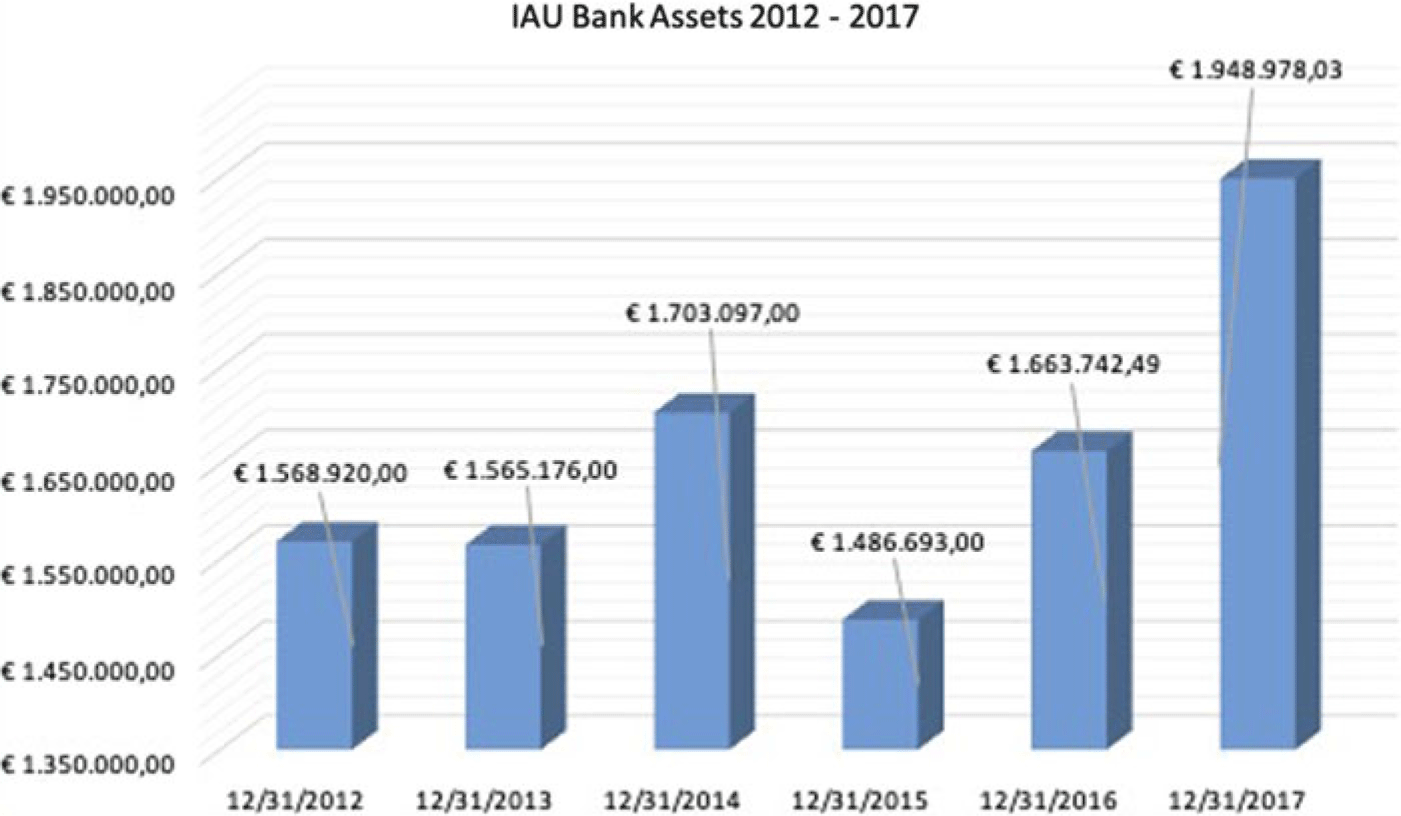
Figure 1. IAU Bank assets evolution 2012–2017. Credit: Piero Benvenuti
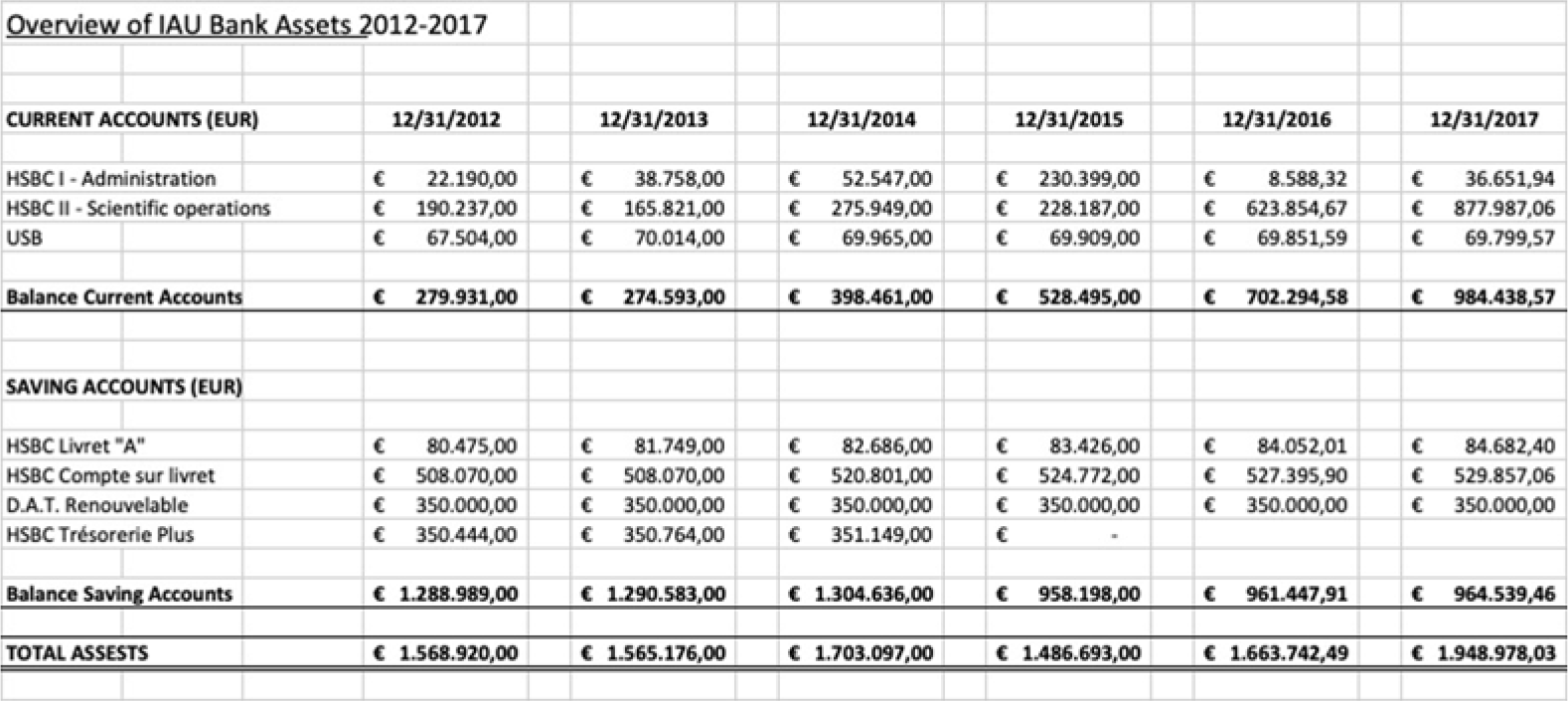
Figure 2. Table 1 - IAU Bank assets evolution 2012–2017. Credit: Piero Benvenuti

Figure 3. Table 2 - IAU Income projection 2018–2021. Credit: Piero Benvenuti
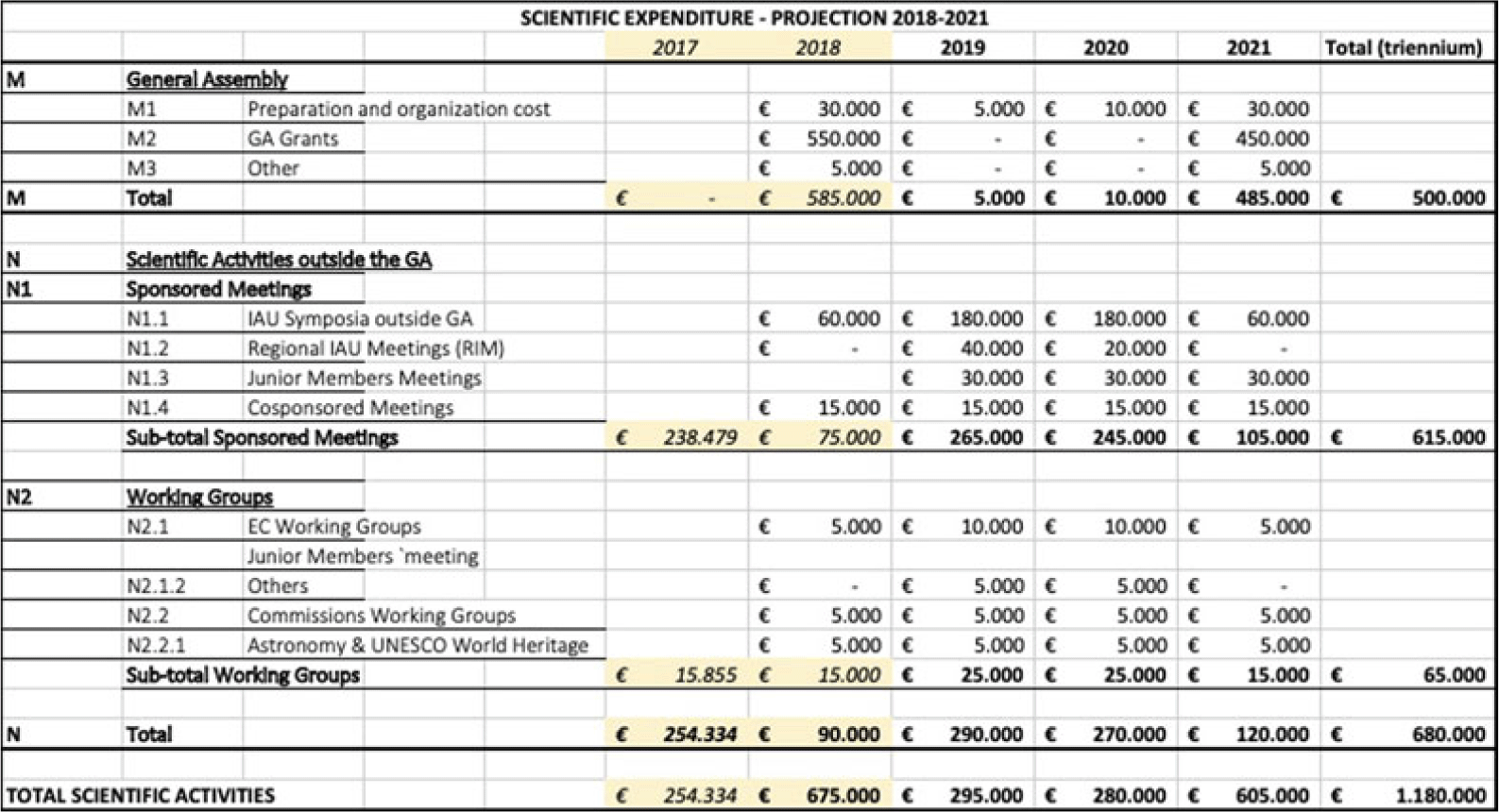
Figure 4. Table 3 - Scientific expenditure projection 2018–2021. Credit: Piero Benvenuti
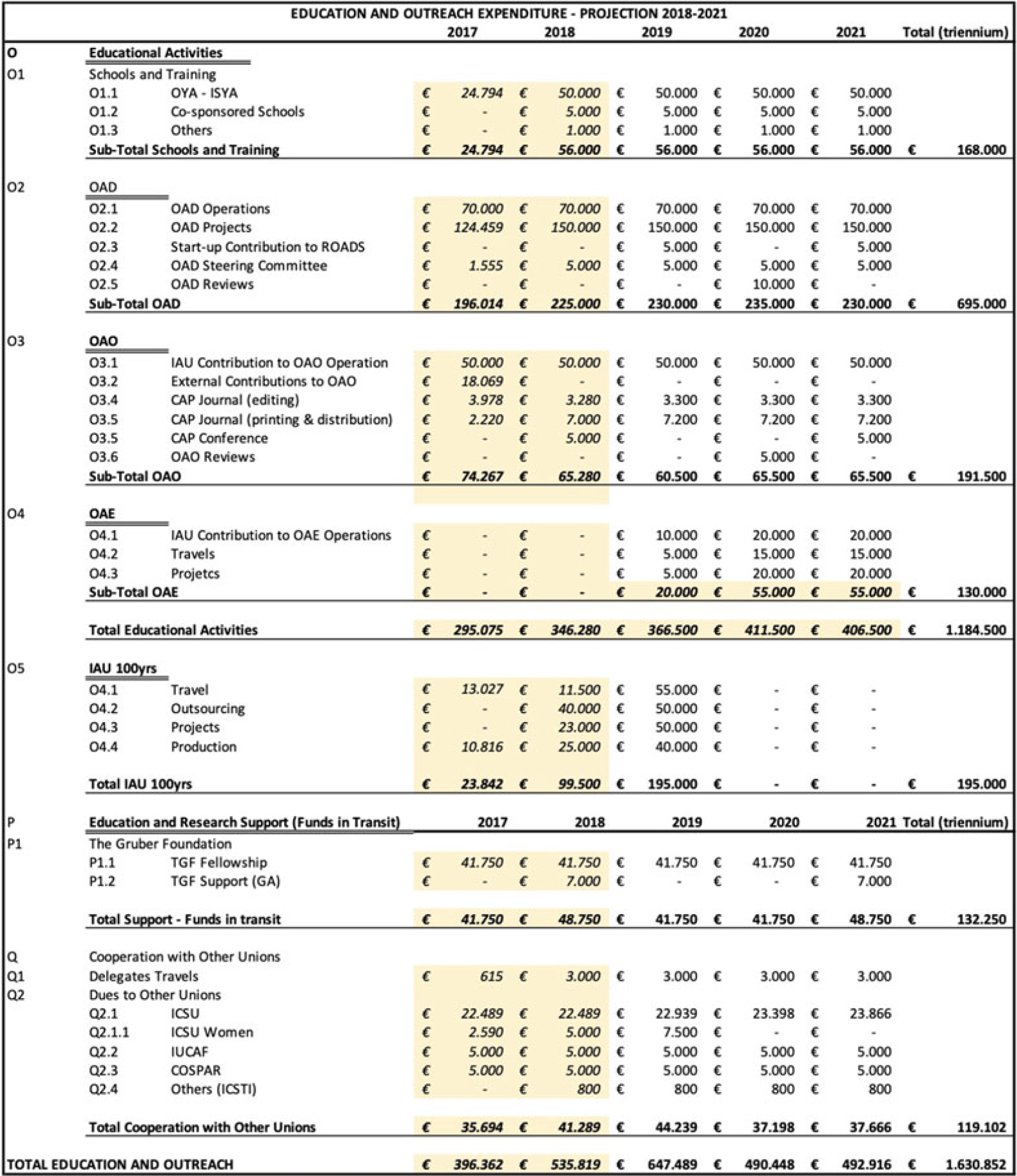
Figure 5. Table 4 - Education and outreach expenditure projection. Credit: Piero Benvenuti
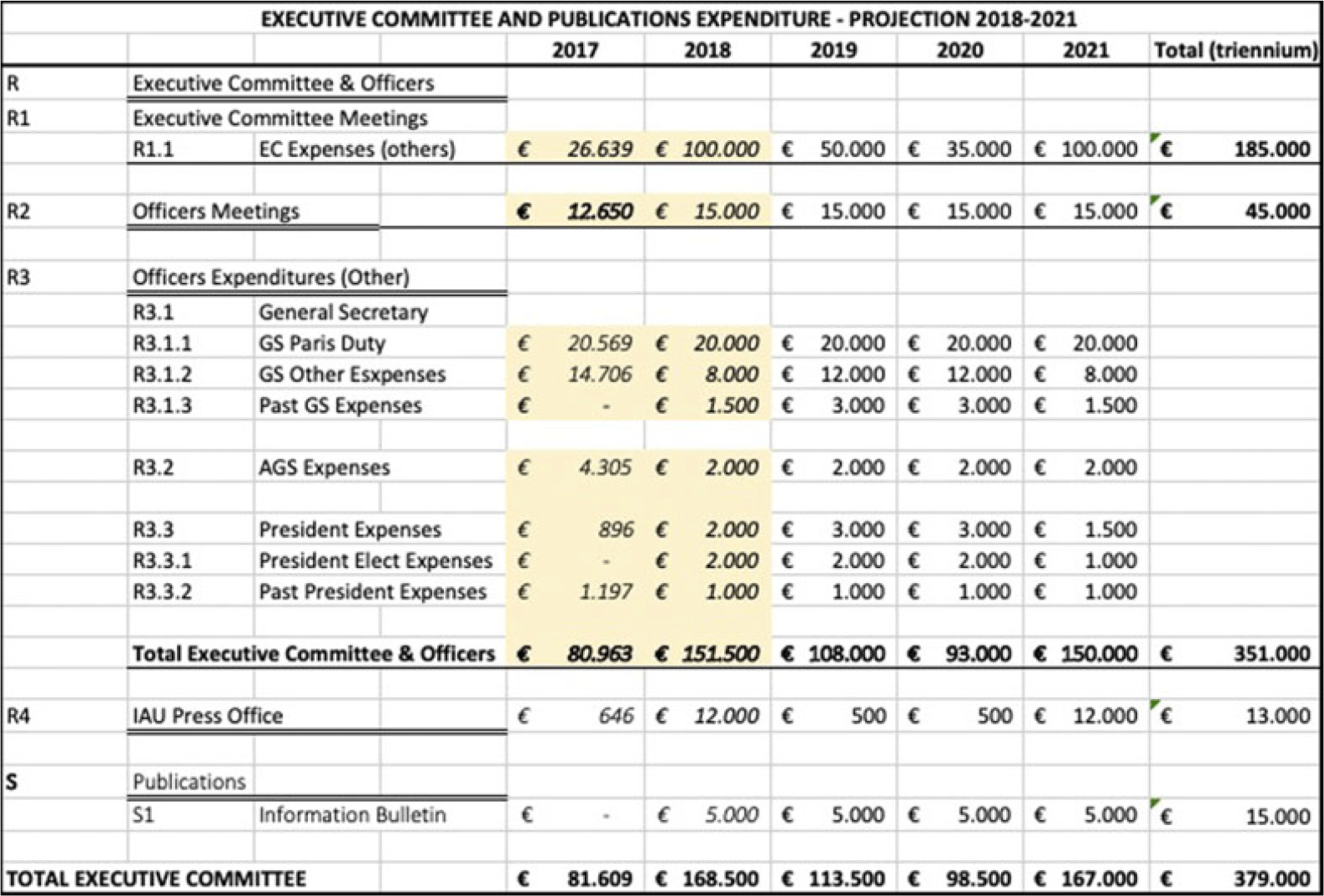
Figure 6. Table 5 - Executive Committee and Publications expenditure projection. Credit: Piero Benvenuti
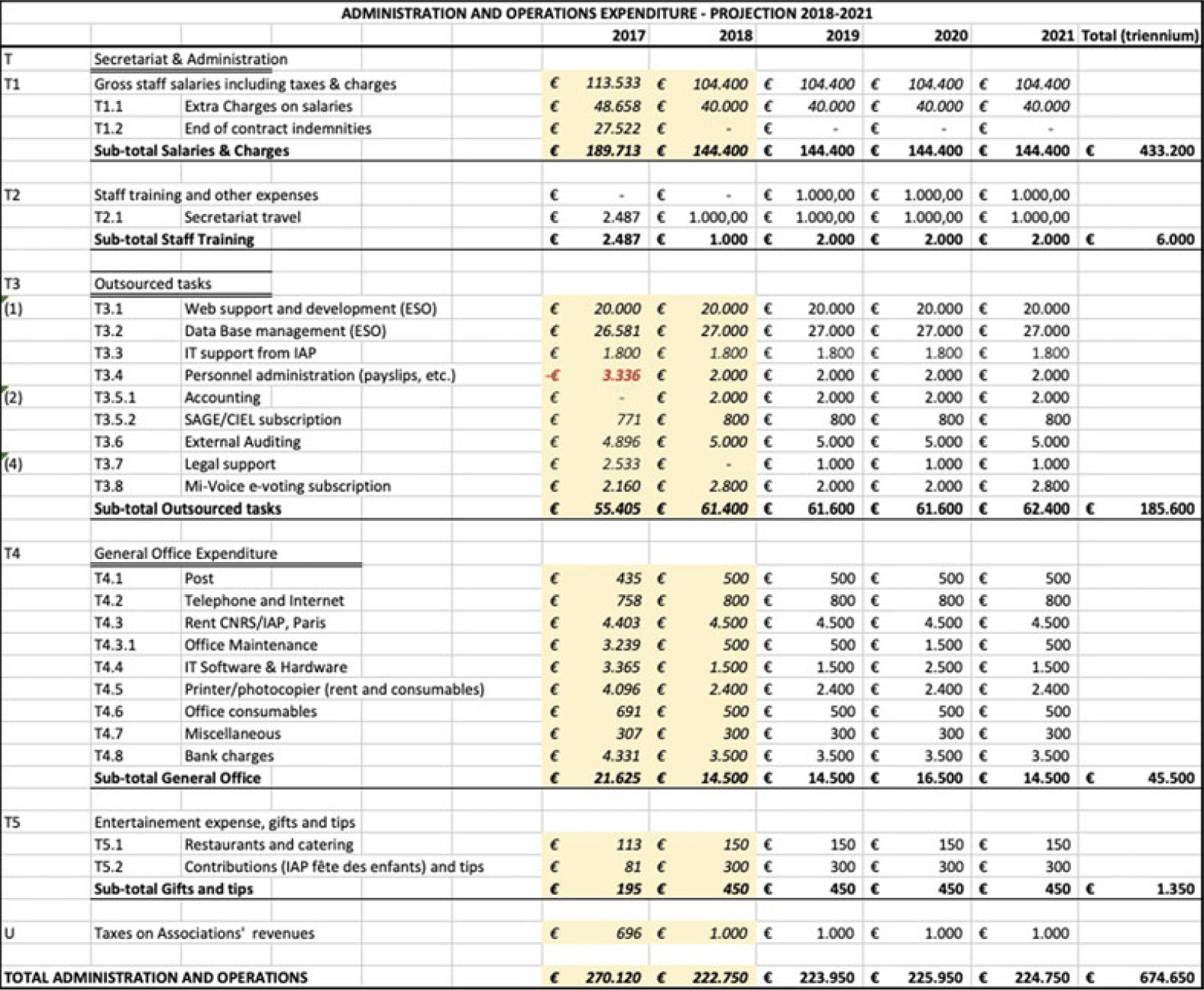
Figure 7. Table 6 - Administration and Operations expenditure projection. Credit: Piero Benvenuti
As far as the income is concerned, it is proposed to maintain the 2% annual adjustment of the unit contribution to take into account the average index of inflation. The same adjustment has been recently proposed by the ISC (ex-ICSU) and approved at large majority by the ICSU affiliated Unions.
3.2 Detailed Budget Projection
3.2.1 Bank assets
The IAU holds and operates 3 current bank accounts and 3 saving accounts.
Out of the 3 currents accounts, one is with the UBS Bank in Swiss Francs and is essentially dormant (The UBS account has now been closed and the money transferred to the HSBC-II - Science Operation account), the other two are with the HSBC Bank in Euros and are used the first for administrative transactions (salaries, taxes, charges, etc.) and the other for transactions with the community (NM dues, Symposia, GA, etc.).
The actual asset of the two saving accounts (Livret “A” and Compte sur Livret) are communicated to IAU in March each year, therefore the values reported here for the year 2017 are the same as those at the end of 2016. The total asset for 2017 will have to be adjusted when the accrued interests will be known. The interests of the D.A.T Renouvelable (350.000 €) are paid every 6 months and are automatically registered in the Administration account.
The Assets data from 2015 to 2016 are reported in here in table and graphical form.
3.2.2 Sources of income
The income forecast for the years 2018–2021 is presented in Table 2. It takes into account the proposed 2% adjustment of the dues unit and the increase of the number of units associated to the admission of 4 new National Members in Category I. The CUP royalties is a prudent estimate and the KAVLI/NASL for the ISYAs (International Schools for Young Astronomers) and Gruber for the TGF (The Gruber Fellowship) are funds in transit.
3.2.3 Science expenditure projection
The expenditure forecast in the area of Science support for the years 2018–2021 is reported in Table 3. The main variation from the previous triennial budgets is the increase of the grants allocation for the XXX and XXXI GAs.
The rationale for the increase has been described in Section 3.1.
3.2.4 Education and Outreach expenditure projection
The expenditure forecast in the area of Education and Outreach support for the years 2018–2021 is reported in Table 4. The main variations from the previous triennial budgets are:
An increase of the allocation for the ISYA Schools to 50 K€ per year. This will allow the OYA to accept two ISYA per year instead of the current number of 3 schools every two years. Assuming that the KAVLI/NASL annual contribution remains at the level of $30 K, this implies an increase of the IAU annual contribution of 15 K€. Since the cost of individual ISYA may vary, depending on the number of factors, the OYA triennial budget is reserved exclusively for the ISYA, therefore the annual positive or negative balances are carried over into the next annual budget.
The allocation of 110 K€ for the annual call of OAD Projects is raised to 120 € (the call is largely oversubscribed).
The cost of the CAP (Communicating Astronomy to the Public) Journal takes into account the transfer of responsibility from ESO to OAO.
The establishment of the Office of Astronomy Education (OAE) is proposed in the new IAU Strategic Plan 2020–2030. In the current forecast, the expenditure for the OAE is just a ramping up estimate which will have to be adjusted once the International Call for the establishment of the Office will be known.
The cost of the initiatives for the celebration of the IAU 100 years anniversary in 2019 has been spread among the 3 years 2017–2019.
The funds in transit in support of education by The Gruber Foundations remain unchanged.
The cooperation with other Unions shows a reduction of the annual contribution to ICSU (from 2020 to the new International Council for Science, ISC, which results from the merging of ICSU and ISSC that was approved in October 2017). As a matter of fact, the annual contribution to the new ISC has not yet been determined, however the EC concurred that the current policy adopted by ICSU to determine the annual due of the affiliated Union, exclusively based on the gross income of the Union, is grossly unfair, because it considers the Unions as a sort of profit enterprises and does not take into account the use of the income which, in the IAU case, is mainly devoted to supporting Science, Education and Outreach. On this basis, the EC authorized the GS to communicate to ICSU a unilateral reduction of the annual due of 50%, in view of a hopefully more rationale due policy of the new ISC.
3.2.5 Executive Committee and Publications expenditure projection
The expenditure projection in the area of Executive Committee and Publications for the years 2018–2021 is reported in Table 5. There are no major variations from the previous triennial budgets. It should be noted that the budget for EC expenses takes into account the two EC Meetings in the GA years and the fact that the Division Presidents are invited to attend one EC Meeting between GAs.
3.2.6 Administration and Operations expenditure projection
The expenditure projection in the area of Administration and Operations for the years 2018–2021 is reported in Table 7. The forecast shows some economies due to the end of contract of the part-time archivist and to the rationalization of the general office expenditures.
3.3 Summary
The summary of the budget projection for the years 2018–2021 is reported in Table 7. As indicated in Section 2, the budget has been designed to arrive at the end of 2021 with an asset roughly equivalent to one-year income. In order to achieve that goal, the net results of the years 2018, 2019 and 2021 are negative, while it is positive for the “intermediate” year 2020. Considering that, as explained in Section 2, this triennium is somewhat special due to the 100 years anniversary celebrations, the next triennium 2022–2024 should resume the usual trend, i.e. a positive result in the two non-GA years and negative in the GA year.
The evolution of the Bank assets is reported in Figure 8 that clearly shows the gradual reduction of the assets to arrive at the end of 2021 with an amount of ∼1.084 K€, equivalent to the average income in the triennium:∼1.105 K€.
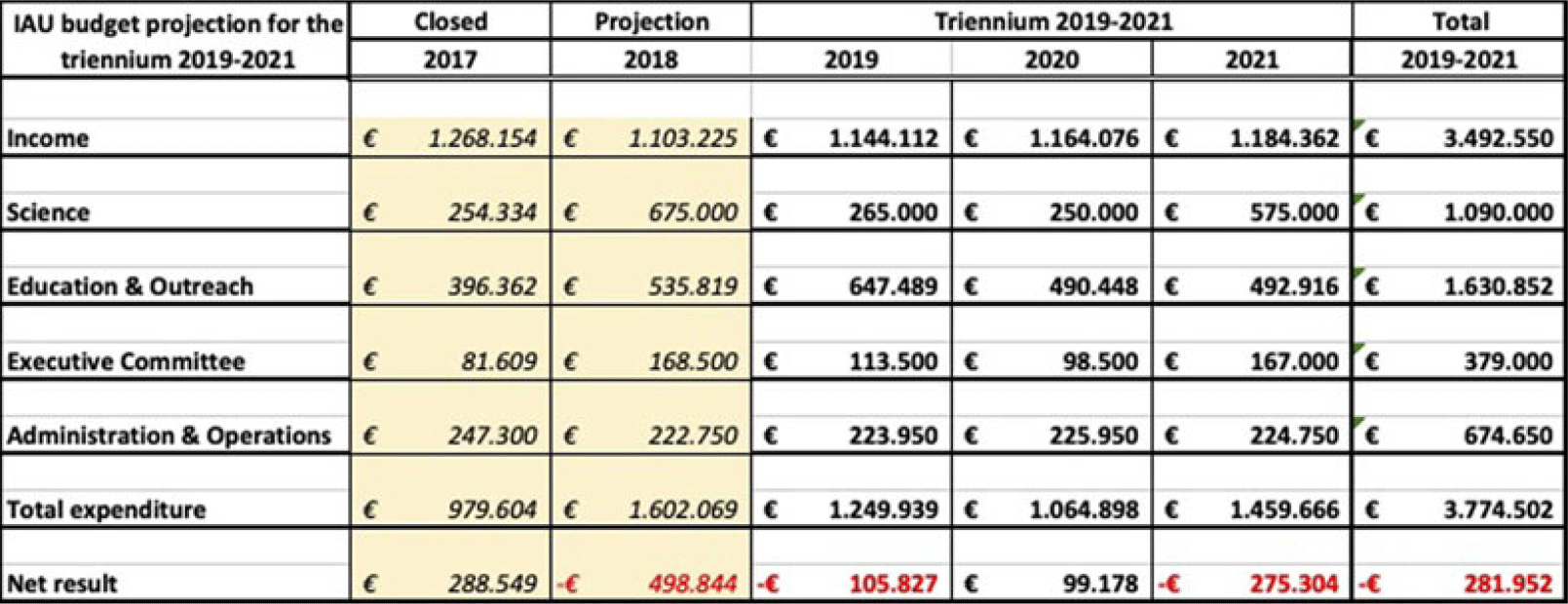
Figure 8. Table 7 - Summary of the budget projection 2018–2021. Credit: Piero Benvenuti

Figure 9. IAU assets projection 2017–2021. Credit: Piero Benvenuti












